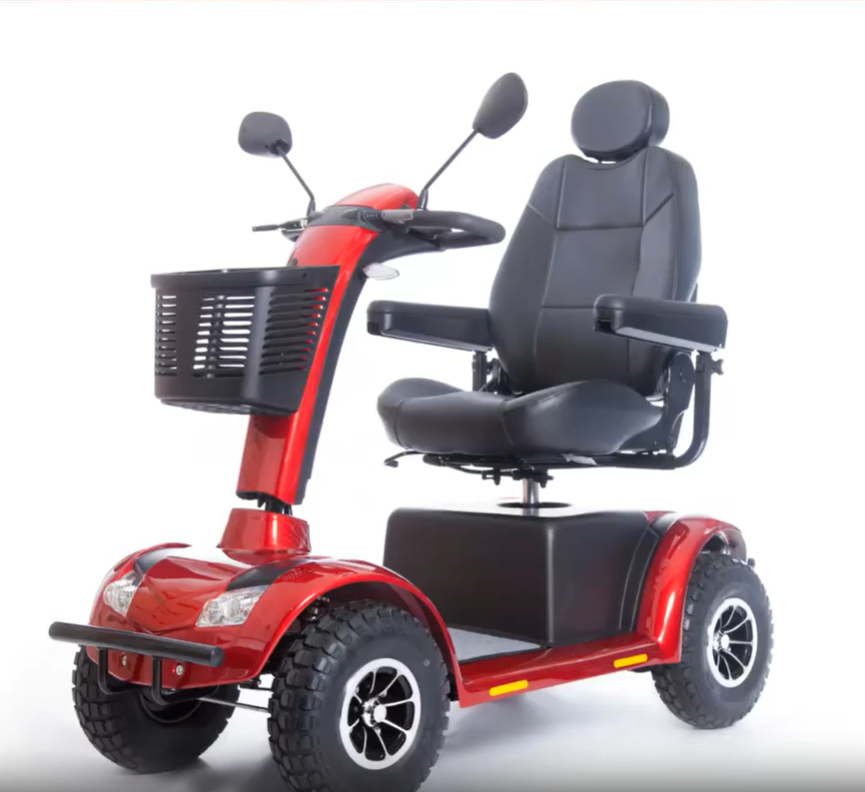Simple Mobility Aid Solutions That Improve Senior Independence
Mobility challenges can significantly impact quality of life. Discover simple, effective mobility aids designed to enhance independence, stability, and comfort for seniors, making walking easier and safer. Learn about the devices recommended by experts that truly make a difference in daily life.

Mobility scooters have revolutionized how seniors with limited mobility navigate their daily lives. These electric-powered devices offer a practical solution for those who retain upper body strength and coordination but struggle with walking distances. By providing reliable transportation both indoors and outdoors, mobility scooters help bridge the gap between complete independence and full assistance, allowing seniors to maintain their dignity and autonomy while aging in place.
How Mobility Scooters Enhance Senior Independence
Mobility scooters represent a transformative tool for seniors seeking to maintain their independence. Rather than relying on family members or caregivers for basic transportation needs, seniors can operate these user-friendly vehicles themselves. This self-sufficiency extends beyond mere movement—it enables continued participation in community activities, regular shopping trips, and social engagements that might otherwise become inaccessible. The psychological benefits are equally significant, as maintaining independence correlates strongly with improved mental health and quality of life for older adults.
Many mobility scooters feature intuitive controls designed specifically for seniors, including ergonomic throttles and simple steering mechanisms. These thoughtful design elements ensure that even those with limited dexterity or mild cognitive impairments can safely navigate their environments. Additionally, modern scooters often include adjustable seating, storage compartments, and weather protection options that further enhance their practical utility in everyday scenarios.
Choosing Stable Mobility Solutions for Safety
Stability represents one of the most critical factors when selecting a mobility scooter for senior use. Three-wheel models offer excellent maneuverability for indoor environments and tight spaces, while four-wheel designs provide superior stability for outdoor terrain and uneven surfaces. Anti-tip mechanisms and wider wheelbases further enhance safety for users who may have balance concerns or navigate challenging environments.
Weight capacity is another essential consideration, as properly matched scooters prevent tipping hazards and ensure optimal performance. Most standard models accommodate between 250-350 pounds, though bariatric options supporting up to 500 pounds are available. Ground clearance also plays a vital role in stability—higher clearance allows for safer navigation over thresholds, small curbs, and outdoor terrain without becoming stuck or tipping forward.
Expert-Recommended Aids for Different Mobility Needs
Healthcare professionals typically recommend specific mobility scooter types based on individual assessment of a senior’s physical capabilities, living environment, and lifestyle requirements. Portable travel scooters, which can be disassembled for transport in vehicle trunks, suit active seniors who frequently visit different locations. Mid-size scooters balance indoor maneuverability with outdoor capability, making them versatile for various environments. Full-sized scooters, with their robust construction and extended battery life, serve those requiring longer-range transportation and enhanced comfort.
Occupational therapists often emphasize the importance of proper seating ergonomics in mobility scooters. Features like adjustable armrests, swivel seats for easier transfers, and proper lumbar support can prevent secondary complications like pressure sores or musculoskeletal strain. Physical therapists may recommend specific control configurations based on a senior’s hand strength, range of motion, and coordination abilities.
Technologies for Improved Daily Walking Alternatives
Modern mobility scooters incorporate advanced technologies that significantly enhance user experience and safety. LED lighting systems improve visibility in low-light conditions, while electromagnetic braking systems provide reliable stopping power with minimal physical effort. Many contemporary models feature digital displays showing battery life, speed settings, and diagnostic information in large, easy-to-read formats suitable for seniors with vision impairments.
Battery technology has also evolved considerably, with lithium-ion options offering lighter weight and extended range compared to traditional lead-acid batteries. Some premium models now provide up to 30 miles of range on a single charge, dramatically expanding a senior’s potential travel radius. Suspension systems have similarly advanced, with adjustable shock absorption making travel over uneven surfaces more comfortable and reducing impact stress on users with arthritis or spinal conditions.
Life-Changing Assistance Devices Beyond Basic Mobility
The impact of mobility scooters extends far beyond basic transportation. These devices fundamentally transform daily living by restoring access to activities that might otherwise be abandoned due to mobility limitations. Many seniors report regaining the ability to independently visit parks, attend religious services, participate in community events, and maintain social connections—all crucial factors in preventing isolation and depression in older adults.
Accessories further enhance the utility of mobility scooters in daily life. Oxygen tank holders accommodate seniors with respiratory conditions, while all-weather canopies protect from sun and rain. Cup holders, grocery baskets, and phone mounts add practical functionality, while safety flags and reflective materials increase visibility to others. These customization options allow each scooter to be tailored to the specific needs and lifestyle of its user.
Mobility Scooter Options and Cost Considerations
Mobility scooters vary significantly in price depending on their features, construction quality, and capabilities. Understanding the available options and their associated costs helps seniors make informed decisions that balance budget constraints with necessary features.
| Scooter Type | Typical Price Range | Key Features | Battery Range |
|---|---|---|---|
| Travel/Portable | $800-$2,000 | Lightweight, disassembles for transport, compact | 8-15 miles |
| Mid-Size | $1,500-$3,500 | Balance of maneuverability and stability, moderate comfort features | 15-20 miles |
| Full-Size | $2,500-$5,000+ | Maximum stability, comfort, battery life, suspension | 20-45 miles |
| Heavy-Duty | $3,000-$6,000+ | Higher weight capacity, reinforced frame, all-terrain capability | 15-30 miles |
Prices, rates, or cost estimates mentioned in this article are based on the latest available information but may change over time. Independent research is advised before making financial decisions.
Many seniors may qualify for financial assistance through Medicare Part B, which can cover up to 80% of the cost if the scooter is deemed medically necessary and prescribed by a physician. Various nonprofit organizations, veterans’ benefits programs, and state-specific assistance initiatives may also provide funding options for those who qualify.
Integrating Mobility Scooters into Senior Lifestyles
Successful integration of a mobility scooter into a senior’s lifestyle requires thoughtful planning regarding storage, charging, and accessibility. Indoor storage protects the scooter from weather damage and theft while providing convenient access. Dedicated charging stations with clear pathways prevent tripping hazards from cords. Home modifications like ramps at entrances and widened doorways may be necessary to accommodate scooter dimensions.
Training and practice in controlled environments help build confidence before venturing into more complex settings. Many mobility equipment providers offer orientation sessions covering basic operation, maintenance, and safety practices. Family members can support this transition by accompanying seniors during initial outings and helping identify accessible routes and destinations that accommodate mobility scooters.
Mobility scooters represent more than just assistive devices—they are powerful tools for preserving dignity, independence, and quality of life for seniors facing mobility challenges. By carefully selecting the appropriate model, understanding financial options, and properly integrating these devices into daily routines, older adults can maintain active engagement with their communities and continue enjoying meaningful activities despite physical limitations. This enhanced independence contributes significantly to overall well-being and supports the goal of aging with dignity and autonomy.
This article is for informational purposes only and should not be considered medical advice. Please consult a qualified healthcare professional for personalized guidance and treatment.




